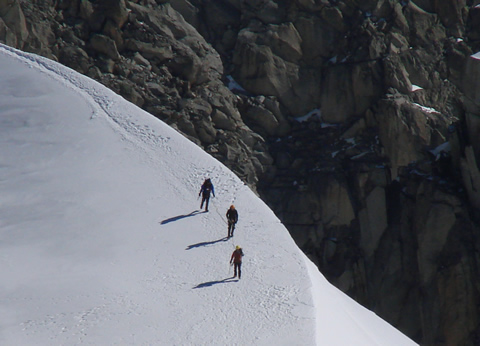Every time Joseph Fisher flies to La Paz, Bolivia, altitude 4,300 metres, it’s the same story. “As soon as I get off the plane, I’m short of breath,” he says. “I can’t even climb a flight of stairs. I’m like a cripple.” That’s because Fisher, a professor of physiology and anaesthesiology at U of T, has a body calibrated to live closer to sea level and, like most humans, his body has to adapt when it finds itself without enough oxygen in the air. But how exactly does it adapt?
New research by Fisher and his colleagues is challenging what has for decades been the accepted wisdom.
When there’s plenty of oxygen in the air, our bodies have the routine down pat. Conditions in the lung make it easy for oxygen to stick to haemoglobin. Then, when the blood circulates around the body, conditions in the tissues make it easy for the oxygen to come unstuck, and to nourish us. But when there’s not enough oxygen, which part of that arrangement gets altered? Do we capture it more aggressively by increasing stickiness in the lung or download it more aggressively by making the haemoglobin-oxygen less sticky at the tissue level?
Evidence from animals over the years has suggested that they pursue the former strategy. But evidence from humans has suggested the opposite. That didn’t make sense to Fisher: “Why would they take that strategy and we take the other?”
He decided to examine the question for himself. A device called the RespirAct, which Fisher helped design, makes it possible to induce very specific levels of hypoxia in human subjects. “We let the person be his own test tube,” he says. Then he and his colleagues took blood samples and tested them on the spot. The study involved testing both native lowlanders and native Andeans. The researchers found that, as in animals, both human lowlanders and Andeans adapted by taking up more oxygen. “Tissues just have to extract harder,” he says.
Fisher thinks that earlier studies, which, rather than exposing living humans to hypoxic conditions, only exposed their drawn blood to those conditions, may not have been sensitive enough to detect the evidence. The change in haemoglobin affinity in animals is much more marked, making it possible to detect even using the test tube method, he speculates. This new method of studying hypoxia acclimatization could lead to a better understanding of genetic differences in our response to altitude – which could affect everything from how likely we are to suffer altitude sickness to how well we run to how fast an army can deploy up high.
Recent Posts
For Greener Buildings, We Need to Rethink How We Construct Them
To meet its pledge to be carbon neutral by 2050, Canada needs to cut emissions from the construction industry. Architecture prof Kelly Doran has ideas
U of T’s 197th Birthday Quiz
Test your knowledge of all things U of T in honour of the university’s 197th anniversary on March 15!
Are Cold Plunges Good for You?
Research suggests they are, in three ways





